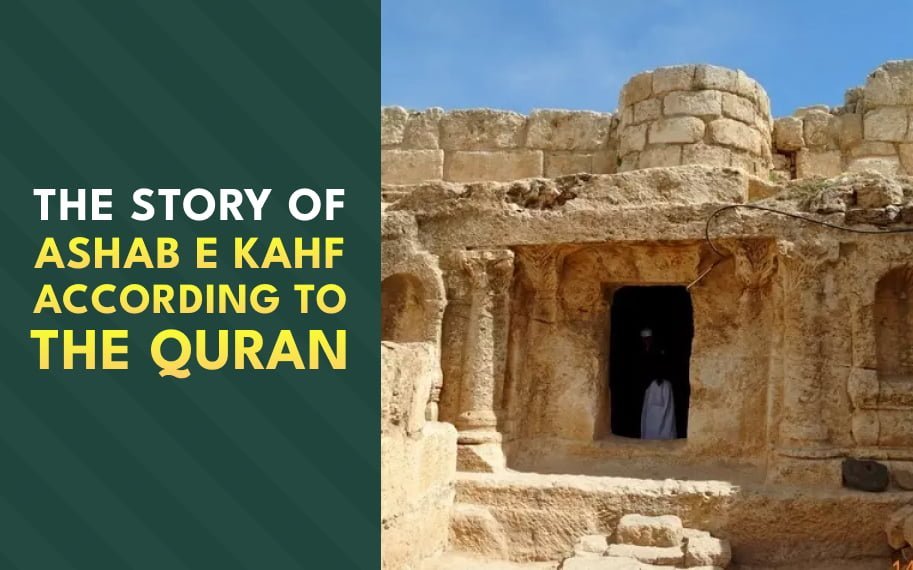
The story of Ashab e Kahf, or the People of the Cave, is a captivating narrative found in the Quran. It is a tale of faith, resilience, and divine intervention that carries timeless lessons for believers. Let’s delve into the details of this remarkable story as narrated in the Quran.
Table of Contents
The Quranic Account
The story is detailed in Surah Al-Kahf (18:9-26), where Allah reveals the events surrounding a group of young men who sought refuge in a cave to escape religious persecution. These men, guided by their unwavering faith, became known as the People of the Cave.
The Youths Seek Refuge
The story begins with a group of young believers living in a society that had deviated from the path of monotheism. Facing persecution for their faith, these youths decide to seek refuge in a cave, entrusting their affairs to Allah.
Divine Intervention
Allah, in His wisdom, causes the youths to fall into a deep sleep that lasts for centuries, protecting them from the oppressive forces of their time. The Quran states that their dog was also a part of this miraculous preservation.
Awakening
After a prolonged period, Allah awakens the youths, and they find that the world around them has changed significantly. Their community has embraced monotheism, and the once-hostile environment has transformed.
The Testimony of Time
The story of Ashab e Kahf serves as a testament to the power of faith and divine protection. It highlights that Allah is the ultimate guardian of those who trust Him, even in the face of adversity.
Lessons from Ashab e Kahf
- Faith and Perseverance
Despite the challenges they face, the youths’ unwavering faith teaches us the importance of steadfastness in our beliefs. - Divine Protection
The story emphasizes that ultimate protection comes from Allah. Trusting in Him during difficult times leads to divine intervention and safeguarding. - Guidance and Transformation
The transformation of society in the absence of the youths signifies that positive change can occur over time, and steadfast believers play a crucial role in that process. - The Power of Unity
The companionship and unity among the youths demonstrate the strength that comes from standing together in the face of adversity.
Conclusion
The story of Ashab e Kahf is a compelling narrative embedded in the Quran, providing profound lessons on faith, perseverance, and divine intervention. As believers, we can draw inspiration from the unwavering commitment of these youths and strive to emulate their virtues in our own lives.
FAQs
Q1: Who were Ashab e Kahf, and why are they mentioned in the Quran?
The Ashab e Kahf, or People of the Cave, were a group of devout youths who sought refuge in a cave to escape religious persecution. Their story is mentioned in the Quran in Surah Al-Kahf as a profound example of faith, divine intervention, and the protection granted to those who remain steadfast in their beliefs.
Q2: Why did the Ashab e Kahf take refuge in a cave?
The Ashab e Kahf sought refuge in a cave due to the religious persecution they faced in their society. They chose to distance themselves from the oppressive environment, relying on Allah’s protection and guidance.
Q3: How long did the Ashab e Kahf remain in the cave?
The Quran does not specify the exact duration of their stay in the cave. However, it mentions that they slept for centuries, and upon awakening, they found the world around them had undergone significant changes.
Q4: What is the significance of the dog in the story of Ashab e Kahf?
The story mentions that the Ashab e Kahf had a dog in the cave. This detail serves to highlight the miraculous nature of their preservation, as even the dog was part of the divine plan to protect them during their deep sleep.
Q5: What lessons can we derive from the story of Ashab e Kahf?
The story imparts several key lessons, including the importance of steadfast faith, reliance on divine protection, the potential for positive societal transformation over time, and the strength found in unity amid adversity.
Q6: Is there a specific day to commemorate Ashab e Kahf or their story?
While there is no specific day mentioned in the Quran for commemorating the story of Ashab e Kahf, some traditions suggest that reciting Surah Al-Kahf on Fridays holds special significance. This practice is believed to bring blessings and protection.
Q7: Are there any historical or archaeological records supporting the story of Ashab e Kahf?
The story of Ashab e Kahf is primarily a religious narrative, and there isn’t substantial historical or archaeological evidence to support it. Believers, however, accept it as a divine account preserved in the Quran.
Q8: How does the story of Ashab e Kahf relate to contemporary challenges faced by believers?
The story’s themes of faith, perseverance, divine intervention, and positive societal transformation resonate with contemporary challenges. It encourages believers to stand firm in their convictions, trust in Allah during difficult times, and contribute to positive change in society.
Q9: Can the story of Ashab e Kahf be found in sources other than the Quran?
While variations of the story exist in folklore and other religious traditions, the Quran is the primary source for the account of Ashab e Kahf in Islamic teachings. Other sources may provide additional details, but the Quranic narrative holds the utmost significance for Muslims.
Read Also
Life of Prophet Muhammad (SAW)
Hazrat Umar (R.A)-Biography, Caliph, Achievements & Death
Life History of Hazrat Usman Ghani (R.A)
Hazrat Ali (RA) – The Lion of Allah
The Bravery of Hazrat Ali (R.A)

